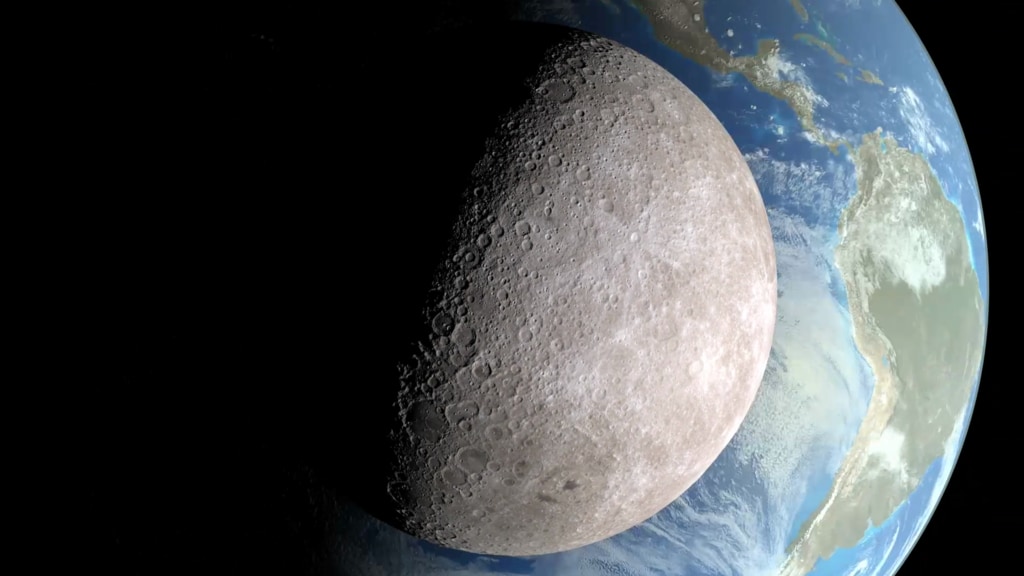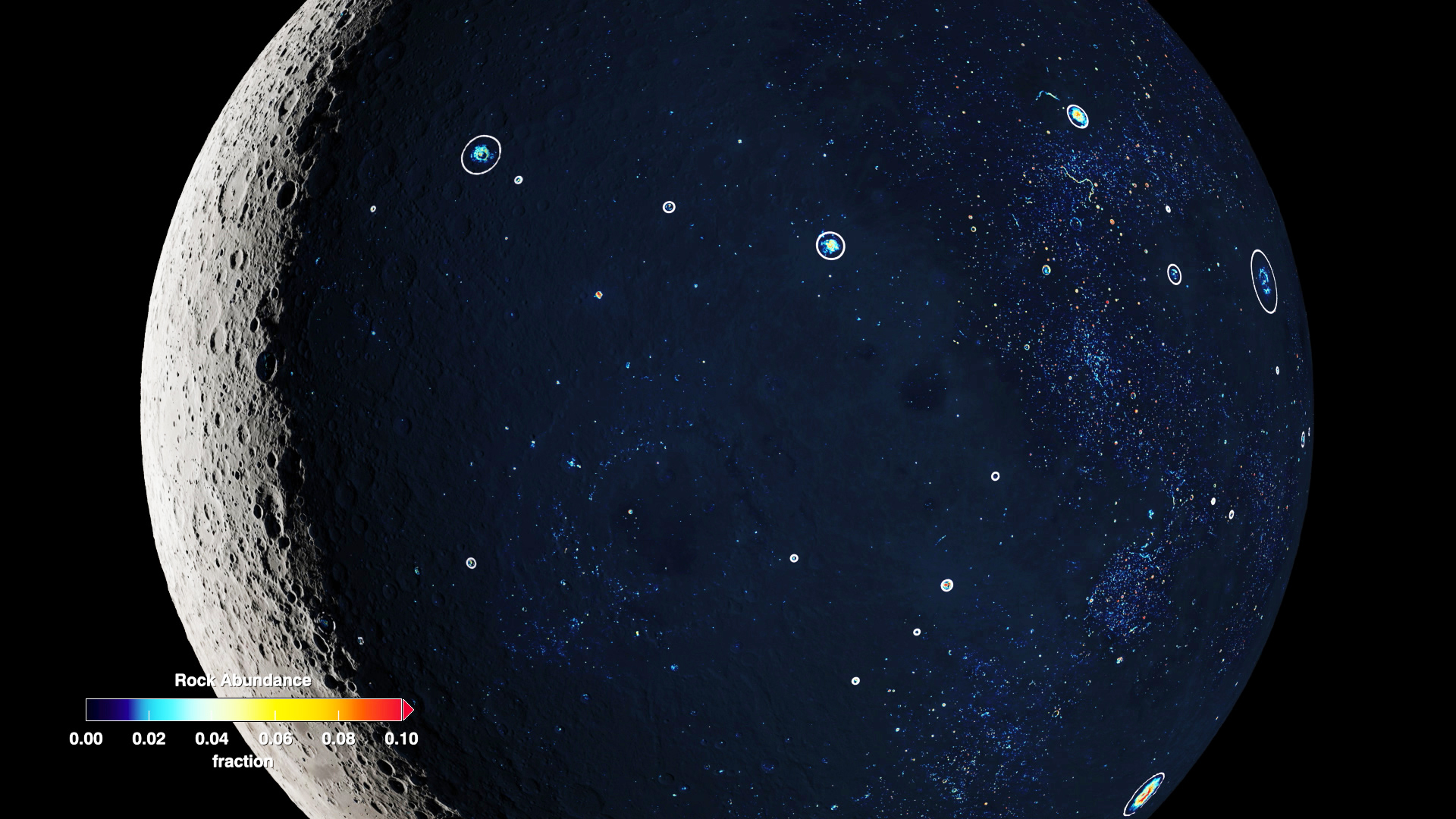Moon Sheds Light on Earth's Impact History
Diviner rock abundance data is overlaid on the lunar globe. Based on this data, the circled craters are less than one billion years old.
Scientists have found a new way to estimate the ages of relatively large, young craters on the Moon using data from the Diviner instrument on Lunar Reconnaissance Orbiter. The method has identified over 100 craters younger than one billion years and larger than 10 kilometers across. The ages suggest that the cratering rate has more than doubled over the last 290 million years or so.
The Earth's crater record shows the same pattern. It was thought that some of the older craters were erased by weathering and geological processes, but the new Moon data suggest that the Earth record is a true reflection of the cratering rate — that the Earth has been hit more often in the recent past than it was a few hundred million years ago.
Known impact craters younger than 650 million years are plotted on a globe of the Earth.
The ages of young craters on the Moon reveal a dramatic increase in the impact rate during the last 290 million years.
The rise in the impact rate found on the Moon is also visible in Earth's cratering history.

A print-resolution still image of the Diviner rock abundance data overlaid on the lunar globe.

The Diviner rock abundance map key.
For More Information
Credits
Please give credit for this item to:
NASA's Scientific Visualization Studio
-
Visualizer
- Ernie Wright (USRA)
-
Producer
- David Ladd (USRA)
-
Scientist
- Sara Mazrouei (University of Toronto)
Release date
This page was originally published on Thursday, February 7, 2019.
This page was last updated on Monday, January 6, 2025 at 12:14 AM EST.
Missions
This page is related to the following missions:Related papers
Datasets used
-
[LRO: Diviner]
ID: 213 -
DEM (Digital Elevation Map) [LRO: LOLA]
ID: 653 -
LROC WAC Color Mosaic (Natural Color Hapke Normalized WAC Mosaic) [Lunar Reconnaissance Orbiter: LRO Camera]
ID: 1015This natural-color global mosaic is based on the 'Hapke normalized' mosaic from LRO's wide-angle camera. The data has been gamma corrected, white balanced, and range adjusted to more closely match human vision.
See all pages that use this dataset
Note: While we identify the data sets used on this page, we do not store any further details, nor the data sets themselves on our site.

